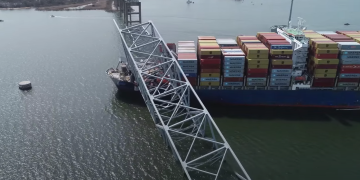Ahead of New Zealand’s national Safer Boating Week (October 12-19), shipping regulatory agency Maritime NZ advised boaties to always check their lifejackets, because old lifejackets can fail. Manufacturers say lifejackets should be replaced after up to 10 years.
Many boaties’ lifejackets are too old and will not help you float. Seawater and sun are tough on equipment, and wear and tear can shorten your lifejackets’ lifespan to less than 10 years. Worryingly, we know many Kiwi boaties are still relying on kapok-filled lifejackets that are 30 to 50 years old,
…said Safer Boating Forum Chair, Sharyn Forsyth.
Boating by the numbers
- 1.51 million adults in New Zealand (about 42% of the adult population ) took part in recreational boating last summer
- Kayaks were again the most popular form of recreational vessel owned or used by boaties (33%), followed by power boats up to 6 metres (22%) and dinghies (11%).
Some long-term statistics:
- 90% of fatalities are men aged about 40 and older
- 85% of fatalities occur in boats less than six metres long
- For 75% of fatalities in boats less than six metres capsize is a major factor; 28% for vessels over six metres
- 2/3 fatalities would likely be prevented if lifejackets were worn
- for around 58% of fatalities, no effective communications is a major factor
- 19-20 boaties, on average, die each year (based on last five years); 19 last year and three this year as at October 1.
On the ocassion, Maritime NZ recommended that lifejackets with either kapok filling or cotton straps should be destroyed and new jackets purchased. Kapok is a fluffy plant fibre, similar to cotton. It has not been used in lifejackets since the 1980s because it can absorb water and cause wearers to sink.
Meanwhile, the cotton straps on these old lifejackets are a serious risk, as they rot over time – even if a lifejacket is not used. In an emergency cotton straps can tear or break off.
Modern lifejackets of all types should be tested every time before they are worn. If they are 10 years old, destroy them and replace them.
Simple tests for all lifejackets to do every time before you go on the water:
- Pull the straps, hard. If any of them stretch or tear, do not use the lifejacket, dispose of it, and replace it.
- Check for any existing tears or cuts in the straps. If there are any, do not use the lifejacket, dispose of it, and replace it.
- Check for any tears, cuts, or punctures in the lifejacket. If there are any, do not use the lifejacket, dispose of it, and replace it.
- Check if it floats.
Drawing attention to Safer Boating Week, on Friday October 12 in Auckland, and Wellington boating organisations’ leaders are jumping into their harbours, while wearing lifejackets, making a splash.
During the week, the slogan “Prep, Check, Know” is used to encourage boaties to take simple steps to get their boats and themselves ready before they get back on the water.
- Prep your boat – service the engine, check and change the fuel, check the battery, and generally give the boat a good once-over
- Check your gear – make sure your lifejackets are still fit for purpose and you have enough, service any inflatable lifejackets, ensure you have two reliable forms of communication equipment – usually, marine VHF radio is best, check the marine weather forecast.
- Know the rules – ensure you know the rules of the road on the water, and check your local bylaws to make sure you understand what the requirements are in your area.

































































